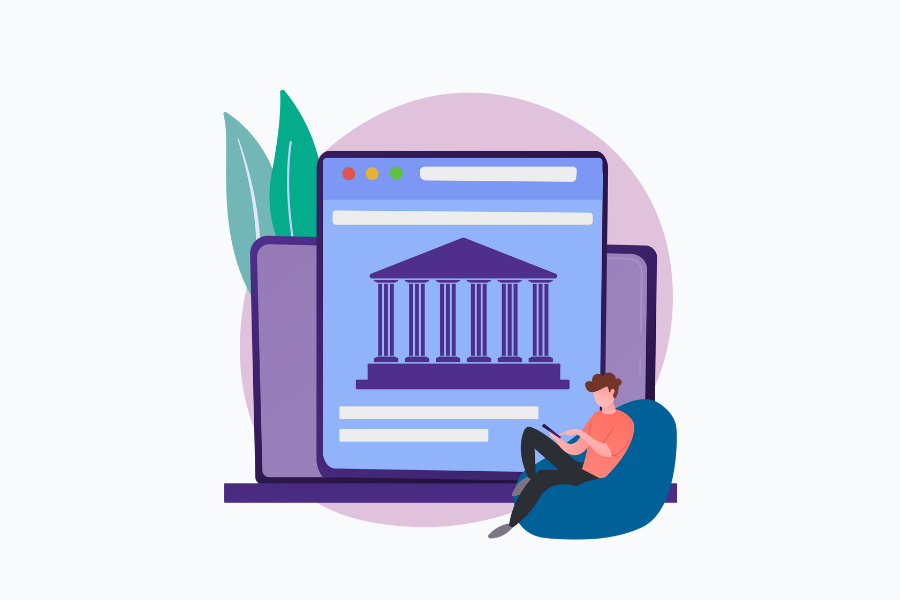
Protecting banks from phishing with face authentication Written on

In today's world of ever-increasing cyber threats, businesses are more vulnerable than ever before. One of the most common types of cyber-attacks is phishing, in which attackers trick users into divulging sensitive information through fraudulent emails, phone calls, or text messages.
💡The most targeted organizations in phishing attacks are banks and other types of financial institutions.

The consequences of a successful phishing attack can be devastating for businesses of all sizes, leading to data breaches, financial losses, and reputational damage. However, with the development of biometric technology, businesses can now use face authentication to protect customers and themselves from phishing attacks.
Face authentication is a cutting-edge technology that uses biometric data to verify the identity of users. Unlike passwords or security questions, biometric data cannot be easily hacked or stolen. In this article, we will explore the benefits of face authentication and how businesses can implement it to protect themselves from phishing attacks.
The problem with traditional authentication methods
Traditional authentication methods, such as passwords, are no longer secure in the face of sophisticated cyber-attacks. Passwords can be easily hacked or stolen through phishing attacks, leaving businesses vulnerable to data breaches and financial losses. Moreover, users are often careless with their passwords, using the same password for multiple accounts or failing to update them regularly. This creates further opportunities for cyber criminals to exploit.
Phishing attacks also target one-time passwords (OTPs) and magic links. Scammers can overtake your users' devices through SIM swap fraud, taking control over the messages and emails users receive.
According to the SlashNext State of Phishing report, there were over 255,000 cases of phishing scams in 2022 — a 61% increase compared to 2021. For banks and financial institutions, the losses from phishing attacks can be even more substantial. 8 in 10 financial institutions will, at some point, experience at least one phishing attack, and a large majority of these will result in credential theft.
A report by the Ponemon Institute found that the average cost of a data breach for a financial services firm was $5.85 million in 2020, with most of these costs coming from lost business and reputational damage. In addition to these financial costs, phishing attacks can also result in regulatory fines and legal liabilities, further increasing the impact on the bottom line.
Given the high costs associated with phishing attacks, it is critical that banks and financial institutions take proactive steps to prevent and mitigate these threats. This can include implementing robust security measures, such as two-factor authentication and email filters, as well as providing regular training and awareness campaigns for employees and customers. By taking a proactive and multi-faceted approach to cybersecurity, banks and financial institutions can help protect themselves and their customers from the devastating effects of phishing scams.
💡 The average cost of a data breach for a bank was $5.85 million in 2020.
The benefits of face authentication
Face authentication is a secure and convenient way to verify the identity of users and prevent unauthorized access to sensitive information. Face authentication works by comparing the user's face to a biometric template. To increase security, many solutions also use liveness detection, which requires the user to perform specific actions, such as blinking or smiling, to prove that they are a real person and not a static image or video.
This helps prevent fraudsters from using photos or videos to spoof the system and gain access to sensitive information. Face authentication with liveness detection provides a high level of security and convenience for users, making it a valuable tool for banks and financial institutions looking to enhance their authentication and security measures.
There are several benefits to using face authentication in banking:
Increased security
Usually, authentication methods rely on something the user knows (a password, a magic link, or a code) or something the user has (a physical token). For most financial institutions, these two methods are combined into a multifactor authentication approach that asks customers for a password and a code (via SMS) to confirm the transaction. Despite the efforts and strict password policies, customers still fall victim to phishing schemes that make banks lose billions of dollars.
Using a face authentication solution, banks can authenticate customers based on who they are. Unlike passwords and codes, which can be easily stolen or hacked, biometric authentication is much harder to fake or replicate. Using a face authentication solution, banks can authenticate customers based on who they are. Furthermore, it provides an additional layer of security to traditional security measures such as two-factor authentication.
Enhanced customer convenience
With face authentication, customers no longer need to remember their passwords, PINs or other authentication credentials, which can be time-consuming and often forgotten. Instead, the technology can quickly and accurately verify the customer's identity using their unique facial features. This results in faster and more efficient transactions, which enhances the overall customer experience and satisfaction. Furthermore, it can lead to a more personalized and tailored experience, as banks can use the data to offer customized products and services that better match their customers' needs.
Give users control over their data
By implementing data privacy measures that give users control over their own data, banks can demonstrate their commitment to protecting their customers' personal information, ultimately leading to greater customer loyalty and retention.
For customers, having control over their own data means that they can choose who has access to it and how it is used. This gives them greater privacy and security. It also gives customers greater flexibility and freedom to choose the services and products that best suit their needs, without having to worry about their personal information being misused or shared without their consent.
Key takeaways
- Face authentication is a more secure way to authenticate users than traditional authentication methods, as biometric data cannot be easily hacked or stolen.
- Face authentication can enhance customer convenience, resulting in faster and more efficient transactions, a more personalized experience, and greater customer satisfaction.
- By implementing data privacy measures that give users control over their own data, banks can demonstrate their commitment to protecting their customers' personal information, ultimately leading to greater customer loyalty and retention.
To know more about the role of face authentication in banking, download our ebook or check the banking use cases for face authentication.






